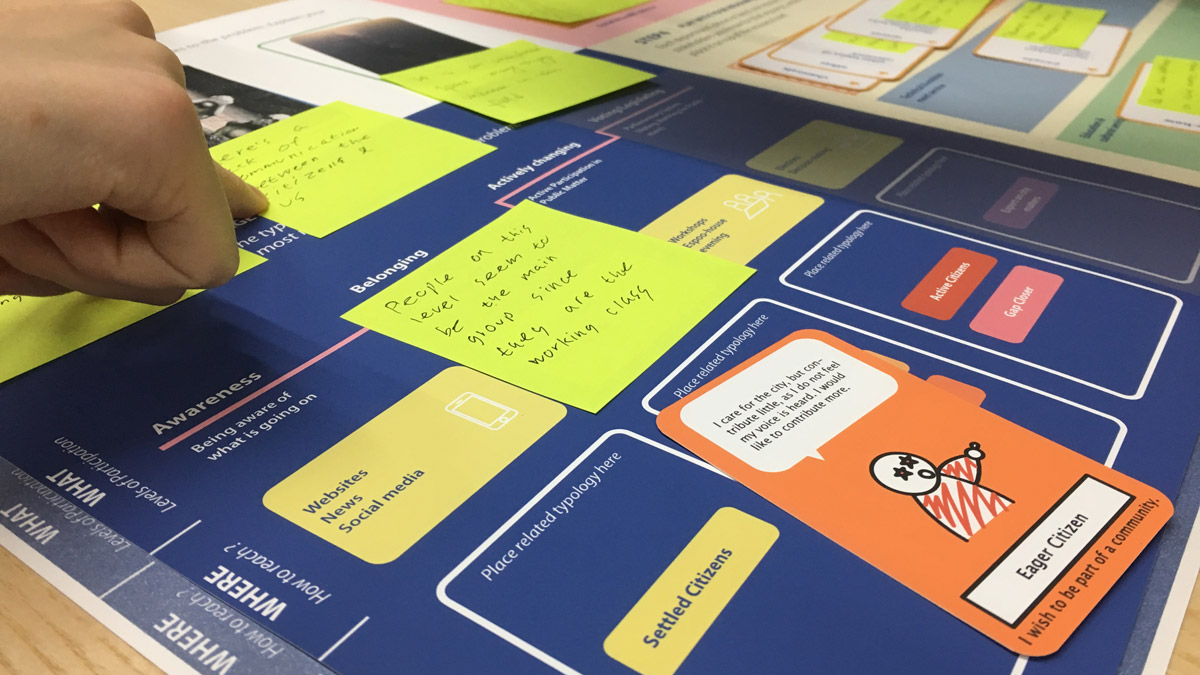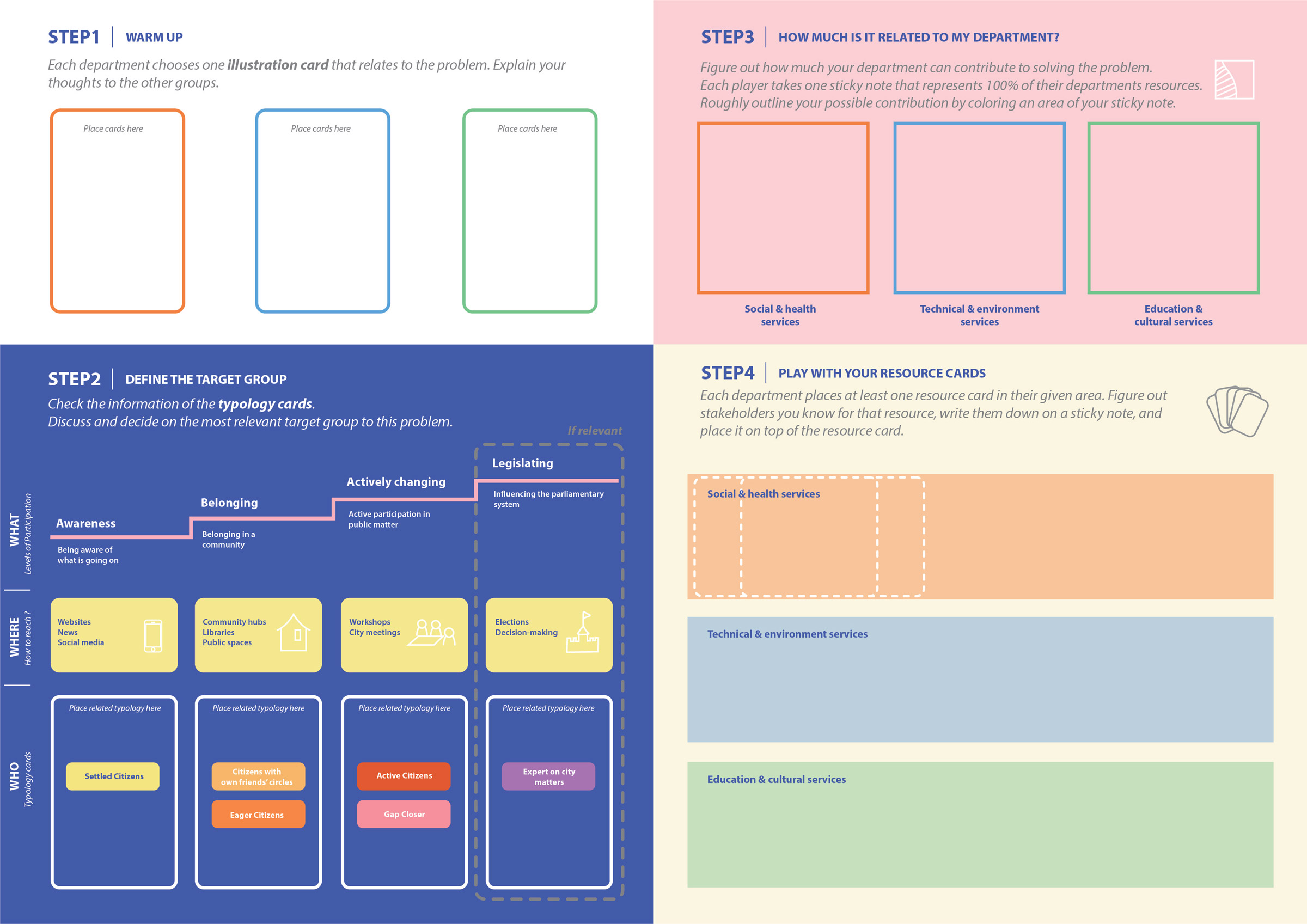Co-designing for Immigrant Participation.
How can we develop participation and facilitate interaction and communication with the focus on immigrants and communities with non-Finnish languages?
Participatory Espoo is prominent topic, pervading every part of how Espoo city functions. In recent years, the issue of integrating the international human capital (Immigrants, exchange students etc.) has become apparent. This means that in a city such as Espoo, the immigrants get undermined, as they do not attribute in the city meetings.


This is an issue, as their voice gets left out and it discourages other immigrants coming to Espoo. To combat this, we found that Community Hubs, centers in which large number of immigrants gather, can be a source towards having the immigrant’s issues heard. These centers can serve to identify key problems that can be given their responsible administrative branch in City of Espoo.

Method
Thus to better understand the problem, we decided to plan and execute design probes to reach and learn from the non-Finnish citizens, interviews and observations to approach the community hubs (hangout centers in which immigrants and other citizens casually gather) and workshops to learn from the interactions of both community hub members and the Espoo City officials. We found that community hubs can be a source towards having the immigrants’ issues heard. These centers can serve to identify key problems that can be given to their responsible administrative branch in the City of Espoo.

Findings
With this understanding, we have found there to be three barriers halting the process of advancing on the levels of citizen participation. Firstly, community hubs are few and lack awareness. Secondly, the community hubs currently have no clear platform for addressing problems relevant for the administrative branches. Lastly, there is a lack of communication between the three administrative branches. Because of these gaps between the political decision-making and the everyday life of the citizens, the voices of the people are often not heard and therefore not taken into consideration.


Solution
We have intervened at the third barrier, as we find this to be the head of the issue. We have developed a game in which each of the relevant administrative branches, who is working with immigrants in one way or another, are present. The aim of the game is to establish a way to connect and make the different branches of the City of Espoo administration collaborate and work together to improve the city. We wish for the meeting to flourish ideation towards how to approach and find solution for the problems given by the managing staff of the community hubs.

My project role
In this project I planned, organised, and conducted interviews with staff members of the local community hub Trapesa. Further, using our field research findings I mapped the relationship between the different stakeholders active in Espoo. Using system-mapping techniques I created a hollistic overview of the major political and civil actors and processes operating within the city. The connections between these many stakeholders were used to discover several opportunities for design within the extremely complex system of actors. Lastly I also helped design the rules, flow, and content of our final design game solution.
Downloads & prototypes
Summary (PDF)
Leaflet (PDF)
Presentation (PDF)
Design Game assets (Print files)
Team members
Liqin Meng
Stefan Tanderup
YaChan Yuan
Lotta Hyvarinen
Shotaro To
Emily Sode
Involved organisations

